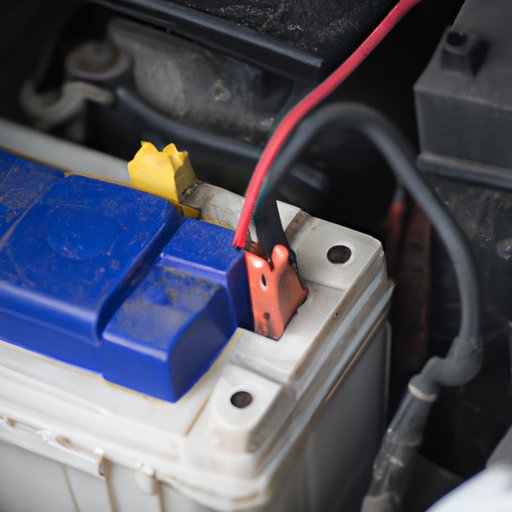
Introduction
As a car owner, one of the most important things you can do is ensuring that your car battery is in good working condition. Regular maintenance of your car battery helps prevent costly breakdowns and keeps your vehicle running smoothly. In this article, we’ll outline the steps involved in testing your car battery.
5 Simple Steps to Test Your Car Battery at Home: A Beginner’s Guide
Testing your car battery at home is a simple process. Here are the steps you need to follow:
Step 1: Locate Your Car Battery
Before you can test your car battery, you need to know where it is located. In most cars, the battery is located under the hood, either near the front or on one side. Check your car owner’s manual if you’re not sure where to find it.
Step 2: Turn Off All Electrical Components
Make sure that all electrical components in your car, including the lights and radio, are turned off before you begin testing the battery. This ensures that the battery is not being used while you’re testing it.
Step 3: Use a Multimeter to Test Voltage
A multimeter is a simple device that measures voltage, among other things. To test your car battery, set the multimeter to measure DC voltage and place the probes on the positive and negative terminals of the battery.
Step 4: Interpret the Results
A healthy car battery will have a voltage reading between 12.4 and 12.7 volts. If your battery is reading less than 12 volts, it may be time to replace it.
Step 5: Take Action Based on the Results
If your car battery is reading between 12.4 and 12.7 volts, then it’s in good working condition. However, if your battery is reading less than 12 volts, then it’s time to take action. You can either charge the battery or replace it entirely.
Troubleshooting Your Car Battery: Know When and How to Test for Issues
While testing your car battery regularly is important, there are some signs to look out for that may indicate that your battery needs to be tested.
Here are some signs that your car battery may need testing:
– Your car cranks but doesn’t start
– Your headlights are dim
– You hear clicking sounds when you turn the key in the ignition
– Your battery warning light comes on
Different climates and driving patterns can also affect how and when you need to test your car battery. In general, it’s a good idea to test your battery every three to four months, especially if you live in an area with extreme temperatures.
Protecting Your Investment: The Importance of Testing Your Car Battery and How to Do It
Testing your car battery regularly is an important part of protecting your investment in your vehicle. A healthy car battery ensures that your car runs smoothly and prevents costly breakdowns.
To extend the life of your car battery, follow these tips:
– Keep your battery clean and free from corrosion
– Don’t leave your lights on
– Drive your car regularly to keep the battery charged
– Have your battery tested regularly
It’s not just your car battery that benefits from regular testing and maintenance. A healthy car battery can also improve the performance of other parts of your car, including the alternator and starter.
DIY Car Maintenance: Testing Your Battery to Prevent Possible Breakdowns
One of the benefits of DIY car maintenance is saving money on costly repairs and replacements. Testing your car battery regularly is an important part of DIY maintenance, and it’s easy to do at home.
Regular testing of your car battery can help prevent breakdowns and save you money in the long run. If you’re not comfortable testing your car battery yourself, many auto shops offer battery testing services.
Properly Testing Your Car’s Battery: A Step-by-Step Guide to Ensure Longevity and Performance
To properly test your car’s battery, follow these steps:
1. Check the battery for any signs of damage or corrosion.
2. Turn off all electrical components.
3. Set your multimeter to measure DC voltage.
4. Place the positive and negative probes on the corresponding battery terminals.
5. Record the voltage reading.
6. Repeat the process with the car turned on.
7. Compare the two voltage readings.
Keep in mind that there are some common issues that can affect the accuracy of your testing results, including battery temperature and age. Also, the type of battery in your car may require specific testing guidelines.
Conclusion
Testing your car battery is an important part of regular maintenance to prevent breakdowns and costly repairs. By following these simple steps and testing your battery regularly, you can ensure that your car runs smoothly and reliably.
Don’t be afraid to make car battery testing a part of your DIY car maintenance routine. With a little bit of knowledge and practice, testing your car battery can be an easy and beneficial task.




